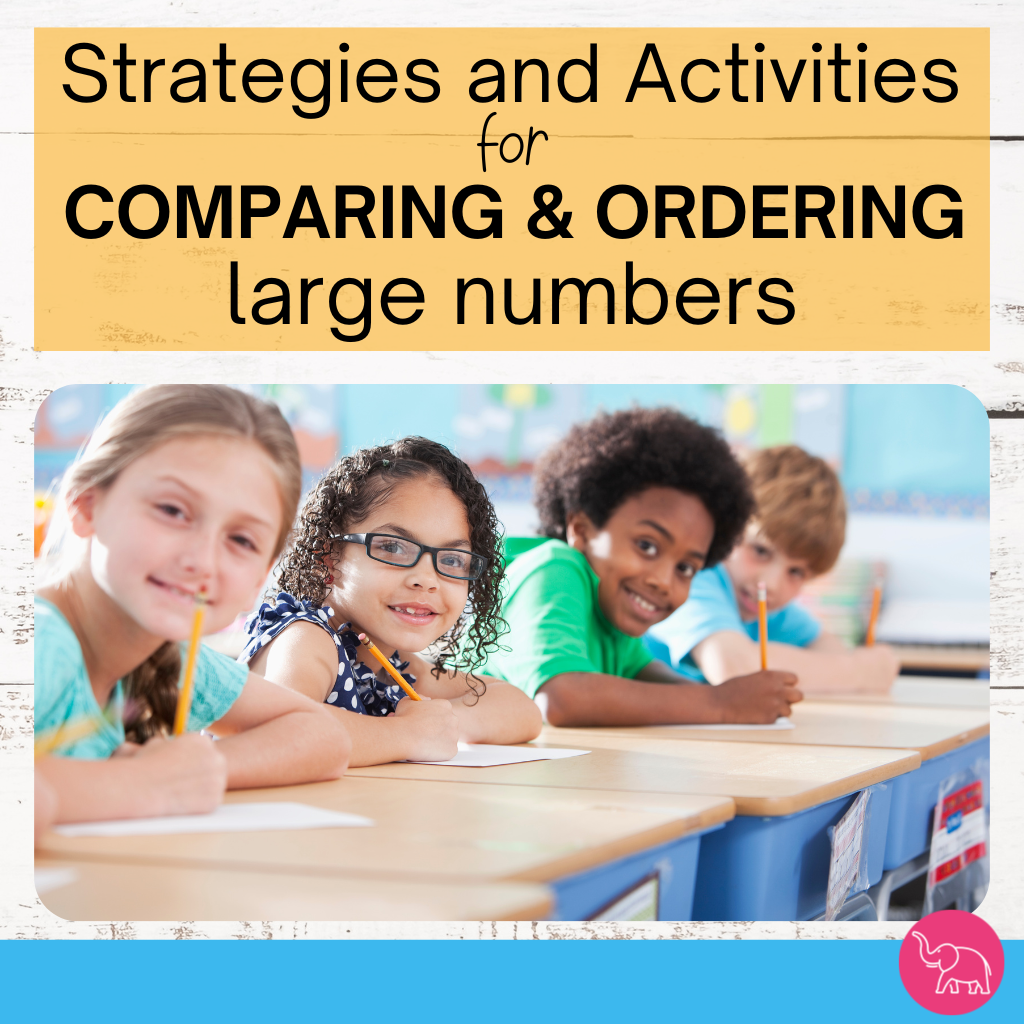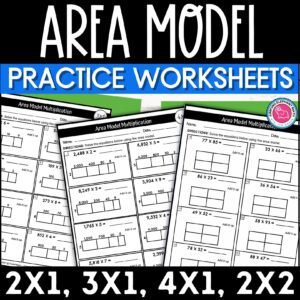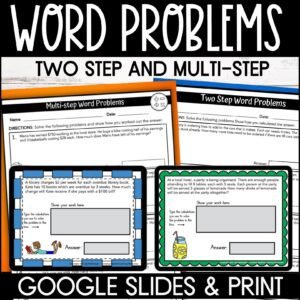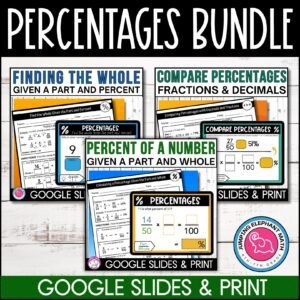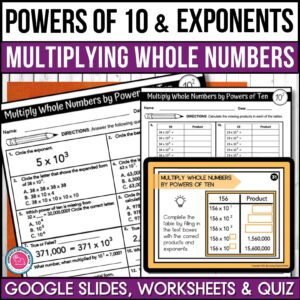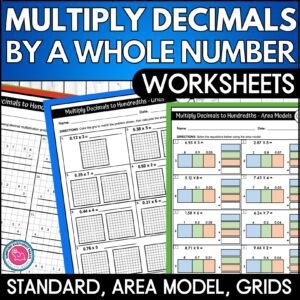In this blog article, we explore the reasons why students need to compare and order whole numbers and the teaching strategies you can use to help students master this skill. You will also find quick starter activity suggestions for your class.
Why is comparing and ordering numbers an important math skill?
Comparing and ordering multi-digit numbers is a must-have for upper elementary students:
- It helps students develop an understanding of the place value of trickier multi-digit numbers. When comparing and ordering numbers, students have to pay attention to the value of each digit in the number.
- As students are required to read and write larger numbers, it helps them to become more fluent with multi-digit numbers and build number sense.
- By using the relative size of numbers, students develop estimation skills and a better ability to spot errors in their own work.
- It provides a solid foundation for more advanced math skills such as percentages, decimals and fractions.
- It is essential for everyday life. We often make decisions using comparisons:
Example 1
You may wish to find the most cost-effective way to travel by comparing the cost of travelling by train with the cost of gas when travelling by car.
Example 2
You may compare a discount of 40% off a $150 dress in one store to a 30% discount off the same dress costing $120 in another store.
Example 3
Football teams win based on their comparative scores or players may be recruited and ranked based on their performance statistics.
With the right strategies and preparation, students can grasp comparing and ordering really well. I use a number of methods and have outlined some below along with suggestions for pre-learning.
how I teach comparing and ordering larger multi-digit numbers
PREPARATION
TIP 1
Review place value: it’s so important to check and make sure students have a strong understanding of place value. Without mastery of this foundation skill, students will struggle to understand the relationship between digits in a number and how they contribute to the value of the number as a whole.
You can purchase the following worksheets from my store. This set of differentiated number forms and place value worksheets help students build skills in converting multi-digit whole numbers to 100,000 using place value charts. CLICK ON THE IMAGE below to find out more.
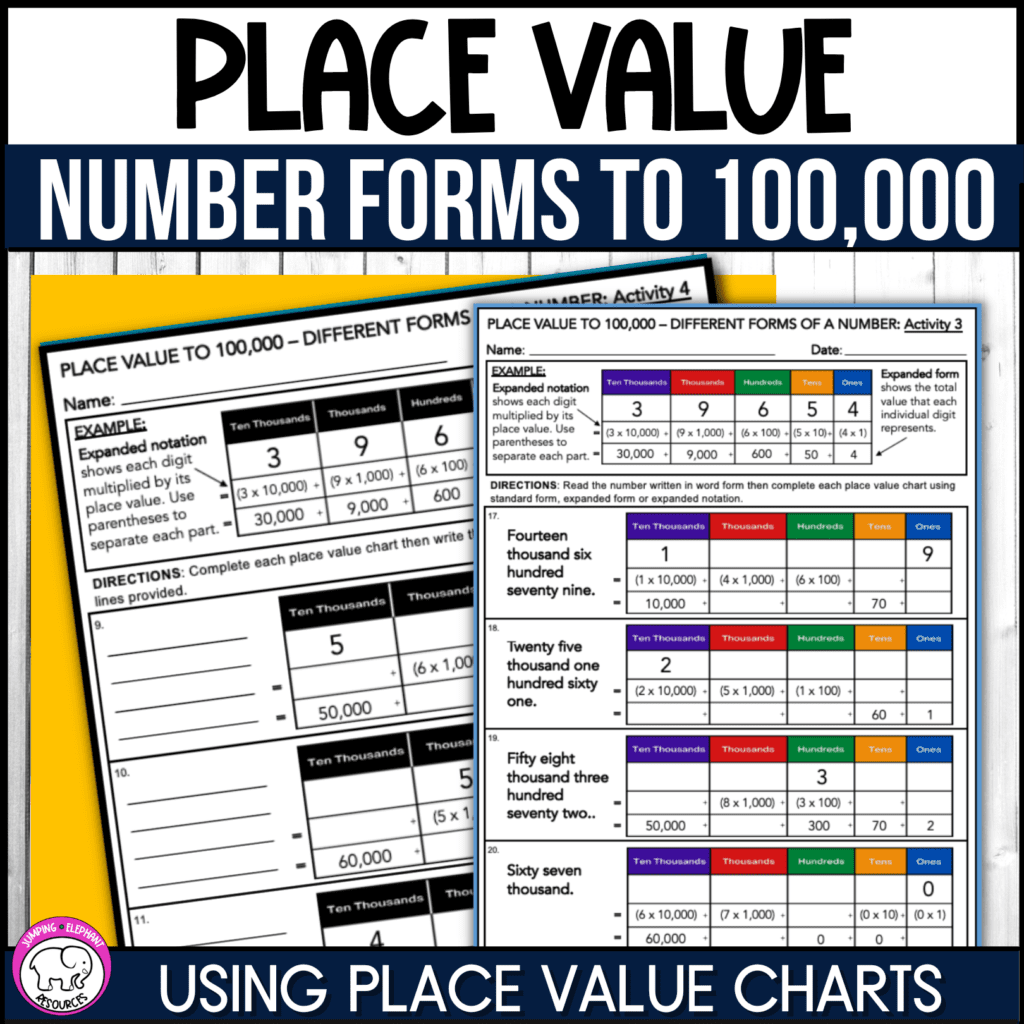
TIP 2
Use real-world examples to show when comparing and ordering are used so students can see the relevance of their learning (see examples above)
TIP 3
Review key vocabulary and comparison symbols to compare and order numbers for upper elementary: Digit, place value, greater than, less than, equal to/equivalent, compare, order, ascending, descending.
TIP 4
I choose to focus on ascending order first when teaching how to compare and order numbers. It seems far more straightforward for students to grasp as it can be related to the natural pattern of increasing values when counting. It means I can really consolidate the terminology and prevent confusion when I have introduced ascending and descending together. A good visual aid/anchor chart will also help. Once ascending is mastered I move on to descending and then inter-change the two at the review stage.
METHODS
USE A PLACE VALUE CHART
A place value chart can be especially useful when comparing and ordering whole numbers that are multi-digit because it allows students to easily see the relative values of each digit. Aligning all the numbers to order vertically in a place value chart means students can quickly:
- Determine how many digits there are, for example, they may spot that one number is 6 digits and the others 5 digits.
- Compare the digits within their corresponding place value and see which of these numbers is greatest (or least).
- Understand that numbers in the highest place value column start from the left and digits in numbers are compared from left to right.


UNDERLINING
Underlining is a simple yet effective strategy that can help students identify and focus on specific digits or numbers within a larger number.
When comparing numbers with the same number of digits, students underline the digit with the highest value (from the left) and compare these digits to see which is the greatest. In the example below, students can quickly identify that 645,288 is the greatest.
If the numbers are the same, students underline the next most significant digit.

I do find that this can cause some confusion when you are comparing and ordering numbers with different amounts of digits for example a student might underline the 6 in 65,932 and the 8 in 8,931 simply because they are both the first digits and disregard their place values. Students may state that 8,931 is greater.
It’s helpful to ask students to read numbers aloud before starting and model some of these question types for students.
NUMBER LINES AND BAR GRAPHS
By plotting numbers on a number line students better easily visualize which numbers are greater than or less than others. Numbers to the right are greater than numbers to the left.
Students will need a very good understanding of sequences, particularly when using number lines for larger numbers. I often use blank number lines where students can work out the scale, add the points of mark and the sequence of numbers needed for each question.
Alternatively, bar graphs can be used, although these do work better, in my opinion, with smaller numbers. The different heights are a great visual way for students to work out which numbers are greater or smaller.
Difficulties arise with this when there is a very small difference in numbers. Students find it difficult to see which bar is greater with a visual alone. I often find that it can be very difficult to find a scale that can accommodate the range of numbers.
MANIPULATIVES
For those students that need a concrete method, I prefer to use place value counters that are color coded and have the value written on each counter for example 10 or 100,000.
Using a place value chart with the counters, students build each number, making sure they use the correctly valued counters for each place.
Starting with the place with the highest value, students compare the number of counters. If the same, they move one place to the right and compare.
There are limitations though, for example, I use them for comparisons rather than ordering. It becomes impractical (with space, amount of counters needed and counters getting mixed up) if there are more than 2 numbers to compare. I also find this works better with small guided groups.
COMPARE AND ORDER NUMBER ACTIVITIES
Just to finish, I’ve listed a few of the activities I’ve used with my students as starters or as part of a lesson to help develop their skills in comparing and ordering numbers.
- Two truths and a lie. I write 3 comparison statements on the board and ask students to find the one that is not true.
- Higher/Lower. I pre-prepare 3 or 4 lists of multi-digit numbers. Each list has 7 to 10 numbers. I cover all numbers except for the first. I then pick a student and ask if they believe the next number on my list will be higher or lower. If they are correct, they move to the next number on the list. The aim is to get to the end of the list. This also works well with teams.
- Roll a dice number – The aim is for student teams to create the greatest number. Using a digital dice, student teams take turns to roll a dice until they have a 4 to 7 digit number (determined by the teacher). On each turn, teams need to decide where to place a number (tens, ones, thousands etc) and it cannot be moved once they have decided. When all teams have their numbers, I use the whiteboard to compare and order the numbers with the whole class to see which team came first, second etc. This works well with 3 or 4 teams.
- Order It!: Give each student a set of number cards with digits up to 100,000. Ask them to work in groups to order the numbers from smallest to largest. The group that finishes first with the correct order wins.
- Place Value War: Students work in pairs. Give each student a set of digit cards (0-9) and have them draw five cards to create a multi-digit number. students compare their numbers using greater than, less than, or equal to. The student with the larger number wins the round. I often put a time limit on this game or a maximum number of rounds.
- What’s my number? The teacher thinks of a multi-digit number and can, if they wish, give some clues, for example, I am a number between 650,000 and 700,000. Students ask questions, for example, are you an even number? Are any digits the same? Is the number in the tens place worth 30? Teachers can only answer with a yes or a no. You can add challenge by giving a limit on the number of questions students can ask, for example, 10 or 15).
- Place Value Sort: Create a set of cards with different representations of a 6-digit number (e.g., expanded form, word form, standard form). Have students work in pairs or small groups to match the cards that represent the same number. Then, have them order the numbers from least to greatest.
- Number ladders. I have an image of a ladder (powerpoint or google slides) with a small number written at the bottom and a large number at the top of the ladder. I have a range of numbers on the side in text boxes, including some numbers that cannot be used on the ladder. Students need to select and place numbers to complete the ladder. There are lots of possible ways to differentiate with this activity which I love, for example, shorter ladders or more numbers added to the ladder at the start.
- I write two numbers on the board with digits missing and ask students to make the sentence “True,” for example:
3_ _ , _ 94 > 3 _ _ , _ _ 8
RESOURCES TO SUPPORT YOUR TEACHING
Jumping Elephant Math resources are designed to meet the needs of a variety of learners and aligned with common core standards. Check out this compare and order worksheets and google slides activity. Click on this link or the image below for further details.
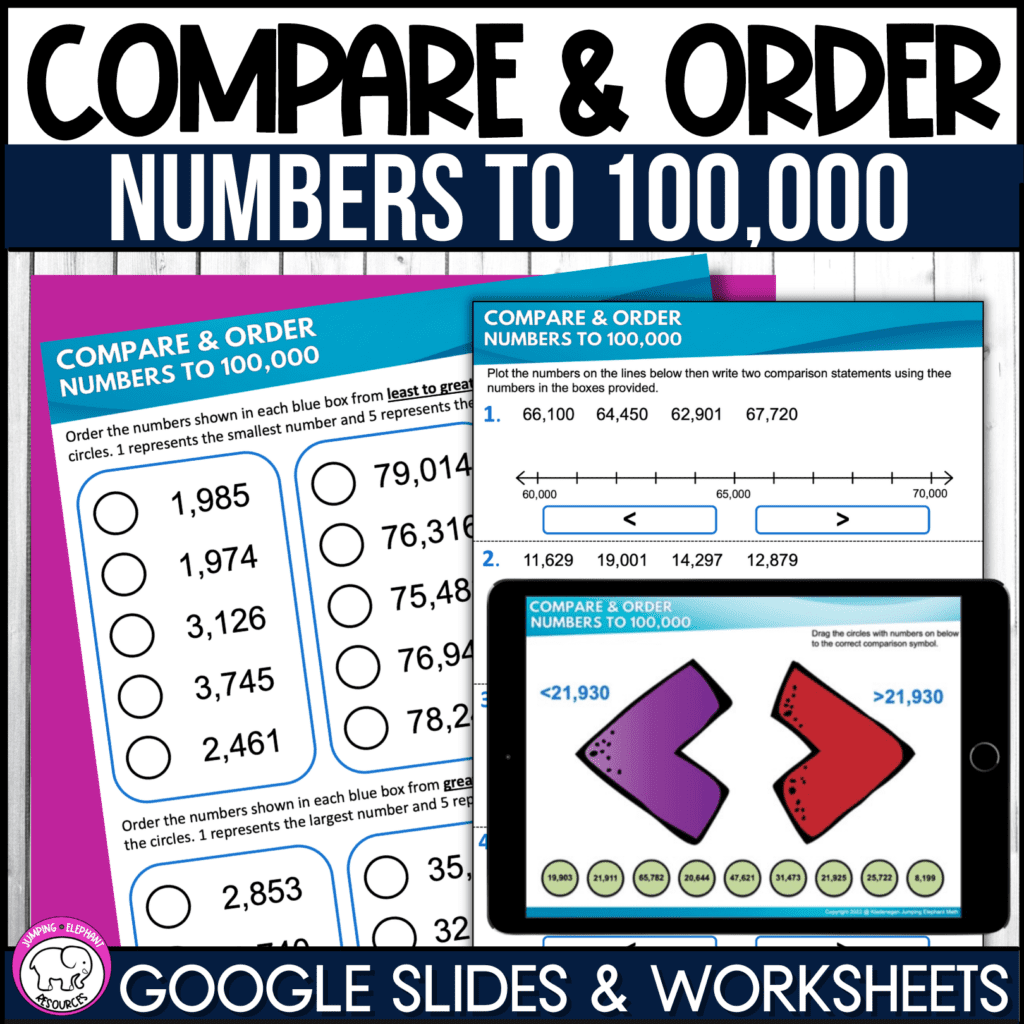
Happy Teaching!

